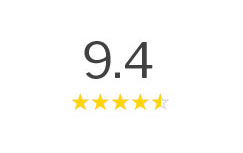 |
 |
|---|
|
|
|---|
 |
 |
 |
 |
|---|---|---|---|
 |
 |
 |
|
 |
|||
 |
 |
 |
|
 |
|||
 |
 |
 |
|
 |
|||

|
lqk6zse8nw5 Marriage and Divorce Records: Navigating the Labyrinth of Public DocumentsIn the realm of public records, marriage and divorce records stand as poignant chronicles of personal milestones. These documents, while seemingly bureaucratic, hold immense significance for individuals seeking to trace family history, verify personal information, or even resolve legal matters. As with any public record, accessing marriage and divorce records can be a complex endeavor, varying significantly depending on jurisdiction and the specific details one seeks. Let's delve into a comparison of popular options available for accessing these records, offering practical advice to guide your journey through this intricate process. Firstly, one must consider the traditional route of visiting local government offices. This method, while time-consuming, often provides the most comprehensive and authoritative information. County clerks' offices or state vital records departments typically maintain these records, allowing individuals to request copies for a fee. The process usually involves submitting a formal application, presenting identification, and specifying the details of the record sought. For those with time on their hands and a penchant for personal interaction, this option provides a sense of reliability and authenticity. Alternatively, in our digital age, many turn to online databases for quicker access. Websites such as Ancestry.com and FamilySearch.org offer extensive collections of marriage and divorce records, though access often requires a subscription or membership. These platforms can be invaluable for genealogical research, providing users with the ability to search records across different states and even countries. However, the accuracy of these databases can vary, as they rely heavily on user-submitted information and digitized records, which may not always be up-to-date or complete. For those who prefer a more direct online approach, some states offer official government websites where individuals can request records digitally. This method strikes a balance between convenience and reliability, offering official documents without the need for physical travel. Fees are usually involved, but the process is straightforward, often providing digital copies that can be easily stored and retrieved. The availability of such services, however, is not universal, and the extent of accessible records can vary widely.
In conclusion, while accessing marriage and divorce records may seem daunting, understanding the various options available can simplify the process. Whether one opts for the traditional in-person request, the convenience of online databases, or the direct approach of government portals, each method offers unique advantages. Ultimately, the choice depends on individual needs, resources, and the specific circumstances surrounding the records sought. As we navigate this labyrinth of public documents, informed decision-making becomes our greatest ally. https://www.cclerk.hctx.net/PersonalRecords.aspx
If you do not receive the license after that time period, contact the Personal Records Department directly at 713-274-8686. How do I get a copy ... https://harriscounty.texas.recordspage.org/marriage-records/
If you click on the license number, you can view a PDF of the original marriage certificate, which can be saved and printed for free. Note: A person can view ... https://www.thorntonesquirelawgroup.com/how-to-find-a-divorce-record-in-texas.html
In most counties, the clerk of the court keeps records of divorces filed there. To obtain a divorce record or marriage record in Texas, one must request it from ...
|
|---|